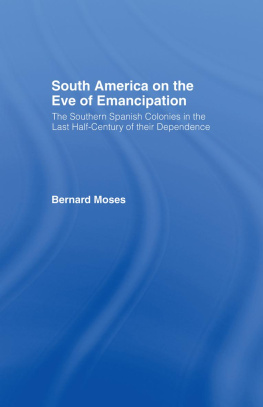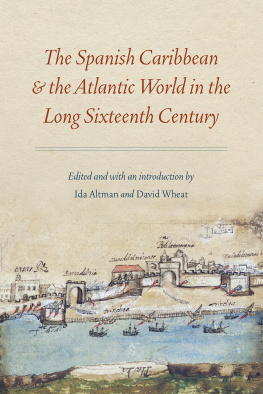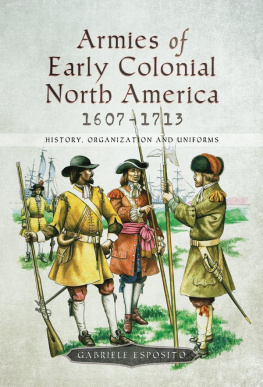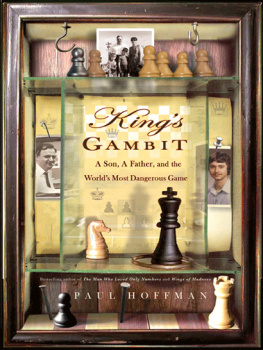Copyright 1990 by Paul E. Hoffman
New material copyright 2004 by Paul E. Hoffman
All rights reserved
Manufactured in the United States of America
Louisiana Paperback Edition, 2004
Designer: Albert Crochet
Typeface: Linotron Trump Mediaeval
Typesetter: The Composing Room of Michigan, Inc.
Printer and binder: Thomson-Shore, Inc.
Publication of this book has been assisted by a grant from the Program of Cooperation of the Ministry of Culture of Spain and the Universities of the United States; the book has won a Spain and America in the Quincentennial of the Discovery Prize for 1987, which was sponsored by that program.
Library of Congress Cataloging-in-Publication Data
Hoffman, Paul E., 1943
A new Andalucia and a way to the Orient : the American Southeast during the sixteenth century / Paul E. Hoffman.
p. cm.
Includes bibliographical references.
ISBN 0-8071-1552-5 (cloth)
1. Southern StatesDiscovery and exploration. 2. ExplorersSouthern StatesHistory16th century. 3. AmericaDiscovery and explorationSpanish. I. Title.
F212.H64 1990
975'.01dc20
89-13492
CIP
ISBN 0-8071-3028-1 (pbk.)
The paper in this book meets the guidelines for permanence and durability of the Committee on Production Guidelines for Book Longevity of the Council on Library Resources.

Preface to the Paperback Edition
This is a quintessentially American story, although it is set in a time and involves actors that most historians of the United States do not recognize as part of our national story. It is such a story because like immigrants through the centuries, the individuals herein discussed projected their hopes and dreams upon the land that is the United States only to discover that the realities of the land and its inhabitants were (and are) often cruelly different from what had been hoped for and imagined. The less fortunate and less determined, such as the French and many sixteenth-century Spaniards and Englishmen, suffered hardship and ended up fleeing or dying. The fortunate and persevering, also sixteenth-century Spaniards, survived the hardship and made the most of the encounter between their hopes and dreams and the realities of the land and its inhabitants. As the sixteenth-century historian of the first, unsuccessful, Spanish attempt to create a colony on the Southeastern coast noted, that colony failed because its leaders did not know the conditions they would encounter. In his Historia general y natural de las Indias, Gonzalo Fernndez de Oviedo goes on to say that it was the conclusion of some of the survivors that if colonists brought enough food and other supplies to last them until the land was understood, [settlement] would not be a bad thing, because the climate was better suited [than the Caribbean] for Spaniards.
This story is also a part of the history of the United States because the events discussed here determined where the Spaniards and English placed their colonies and thus how the seventeenth-century history of what became the southern United States was played out. Prevented by the Spanish presence from settling where the geographic legends that are the subject of this book said one should, the English ended up at Chesapeake Bay, the one spot on the southeastern coast of North America where navigable rivers give immediate access to soils that are not sands or subject to flash-flooding. That site was also close to the then-supposed location of Verrazzanos isthmus (a way to the Orient) and closer to the actual latitude of Andalucia, legendary among Europeans for its wine grapes, olives, sugar, and other products. As Peter Wood noted in a review of the original edition of this book, the Jamestown colonists had instructions that show they were at least vaguely aware of both of the legends that frame my discussion of the Spanish, French, and first English attempts to settle what became the American Southeast, legends that the Spaniards had long since discarded for a hard-won realism about the land and its potentials. At Jamestown, too, such hard-won realism soon set in, but that is another story.
In the more than dozen years since this book was originally published, reviewers have been kind enough both to describe it as a fundamental work on the early history of the American South and to note some of its weaknesses. Chief among the latter is the scant attention I pay here to Native Americans and, for some readers, the abundance of detail in these pages. I happily plead guilty on both counts. My purpose when I wrote this book was not to render a complete history of the Southeast during the sixteenth century, even though the subtitle suggests as much; that project proved to be the subject of my Floridas Frontiers (2002), although even that work probably does not do complete justice to Native Americans and also suffers from being highly detailed. I also agree with Patricia Galloways insightful observation that the story told here is largely circumstantial because (except for Jean Ribaults The Whole and True Discovery of Terra Florida) the explorers and colonists and their promoters who acted on the legends that I suggest were keys to their thought about North America did not write anything that unequivocally links their actions to the Chicora (a new Andalucia) and Verrazzano legends.
Every author hopes that his/her work will provoke new scholarship. The search for San Miguel de Gualdape that this book touched off in the region of Sapelo Sound has so far proven barren and seems to have stopped long since. Except for John T. McGraths The French in Early Florida: In the Eye of the Hurricane (2000) about the French colonies, very little new historical scholarship has appeared to reexamine the parts of the story told here. Karen Ordel Kuppermans Fleming Lectures of 2003 (forthcoming, LSU Press) do, I understand, take this book into account, thus addressing Peter Woods call for breaking down the distance between the scholarship of Spanish and French exploration and settlement and that of English exploration and settlement. Archaeological study of the Guale (who lived in coastal Georgia in the area of Sapelo Sound) has virtually ceased, leaving that important topic approximately where it was in 1990.
Were I writing this book today, I would have placed more stress on the construction of the Chicora and Verrazzano legends and done somewhat more with the ecology of the region as a factor in frustrating the hopes raised by the legends. We now know, for example, that both the Spanish colonization of the 1560s and the Jamestown settlement took place during periods of drought, an ecological fact that had numerous, subtle ramifications for Native Americans and the European colonists. Still, I am satisfied that within the terms that I chose for this study it accurately presents what can be known about the Spanish and French colonial ventures that paved the way and determined the location of the English colonial venture (Jamestown) that the U.S. history textbooks still mistakenly view as the beginning of the United States. When you have finished reading this book, I hope you will share my conviction that the events herein discussed are in fact part of that story, as well as of the histories of the European discovery of the rest of the world and of the Spanish empire in the Americas.










